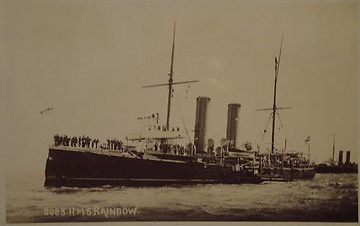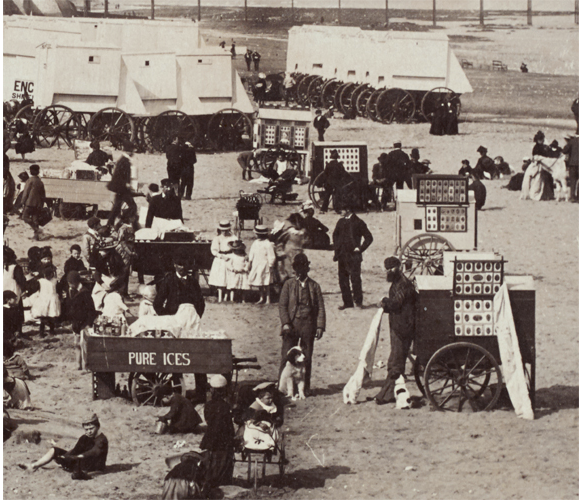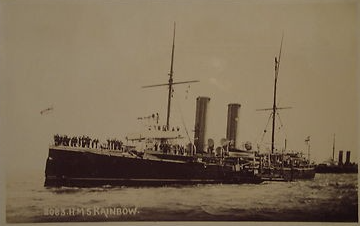Family stories and legends are often the first research questions genealogists have to address as they help to add colour to the characters we uncover, and take us into unrecorded territory.
FACTS : On November 7th 1910 HMS Rainbow, renamed HMCS Rainbow, famously steamed into Esquimalt Bay, Vancouver Island, B.C. to become the first (and only) vessel on the Pacific coast for Canada’s newly formed Navy. The epic journey had taken them round the tip of South America, as the Panama Canal was not opened for traffic until 1914.
On board as crew member was James Frederick Bligh bp 1882, from Ramsgate, Kent who had joined the Royal Navy in his teens but at the age of 30 decided to start a new life in B.C. with the Canadian Navy. He brought with him memories and Tales of the “old country” and family connections “back home”, which were passed via his three sons, James Fredk Jnr, George and John, and to subsequent generations. So these needed to be explored and verified.

Accordingly James Frederick (J . F.) sent for his wife and young family whom he had left behind in Ramsgate with her parents. Harriet Bligh (nee Jordon Dines) and their two small children made the difficult journey across Canada to join him and a further 3 generations of Blighs in B.C. followed. They remained near the Navy at the Esquimalt Naval base outside BC capital Victoria where they raised 7 children.
HMCS Rainbow was a cruiser class vessel which had been retired from the British Navy but was bought by Canada in August 1910 to serve as a training ship. At first it patrolled the West Coast waters as far as Alaska, dealing with illegal fishing and immigration etc. However in WW1 it was the only Canadian vessel defending on the Pacific coast and was called upon to track and intercept enemy vessels further south off the US Coast. Fortunately it was not involved in any battles and was retired in 1917. JF remained with the Navy, later based onshore, until his death in 1934.
From a Newspaper Obituary in the Victoria Daily Times October 5th 1934 we learn that J.F. had arrived 24 years earlier as gunners mate on HMCS Rainbow in 1910, had served here during WW1 and remained employed ashore in the Naval Yard office. He was a member various naval associations and masonic lodge. He was only 54. The service was held at theSt Pauls Garrison Church.
On the BLIGH side of his tree, James Fredk (J.F.) was the son of James Bligh and Julia Carlton, and part of a large and closely knit family in Ramsgate. Between them James and Julia, his brother Frederick (married to Argentine) and William (married to Elizabeth Sarah Petley) had 20 offspring (JF’s siblings and cousins). And James Fredk himself was also one of “three brothers” all with naval connections. His two brothers John Thomas and Maynard Bligh served in the merchant navy, according to their service records. There were also fishermen cousins.
THE FABLES: Census documents confirm several family legends; Firstly, that James Fredk’s family lived next door, in Castle St, to his sweetheart Harriet Jordon Dines (1901 census), whom he married in 1904, and also later close to his uncle William’s family at no 48 Upper Dumpton St. They were a closely knit family and community.
Another legend told of a Beach Photographer on Ramsgate Sands, sometimes operating in Brighton, Sussex. In fact James Fredk’s father (James Bligh) was the working Photographer in 1901 census as (employer) and in 1911, was supplementing his income as a house painter.
Ramsgate was a busy town, thriving port with railway terminal and popular seaside resort and beach portraits were all the rage with the railway day trippers from east London who thronged the beaches in Summer. The mobile “Darkroom” carts provided a ‘while you wait’ service on the crowded beaches, alongside the bathing carriages seen in this photo. The work was seasonal but less arduous than their former employment as labourers, although life was never financially secure. * For more interesting details and pictures of Beach Photographers – see this link https://spartacus-educational.com/DSphotosea6F3.htm

Photo: Ramsgate sands around 1909 courtesy – https://fourtoes.co.uk/iblog/ramsgate-a-victorian-albumen-print/
Next, there was curious legend that one of his forebears had “gone to Spain to buy horses”. This was only explained after delving into the maternal side of the family tree. We found that the name SPAIN crops up as maternal ancestors and further research found that SPAIN was also the surname of the local horse dealer in Ramsgate – perhaps a relative!
Also, there was a longheld belief that the Canadian clan were directly descended from the famous William Bligh of Bounty fame. That is hardly surprising, with several family members at sea, and living in the Naval Hub on Vancouver Island, they were well aware of local Bligh Island and Bligh Straits, charted by Bligh on Captain Cook’s third voyage while searching for the elusive North West Passage( long before the infamous Bounty and Australia Governorship episodes). This belief seems to have been reinforced in the 1960s when a young traveller, Maurice Bligh (from Sittingbourne, Kent), arrived on Vancouver Island, also claiming to be a direct descendant. However, over time our* own detailed family searches using birth and Baptisms uncovered a less illustrious lineage: James Fredk’s line (like mine) leads directly back to the North East Kent Blighs in Canterbury, where his Gt Grandfather Frederick, a Carpenter, (bp 1829) was born, and then back 3 generations to Edward Blye a Cordwainer, bap 1721, thus predating the Birth of “Captain” Bligh 1754 in Plymouth, Devon.
FOLLY: Yet another of these Mariners Tales has only recently come to light while researching the Ramsgate Blighs during WW1. James Fredk’s cousin, William is commemorated as a casualty serving with the Australian Imperial Force.
Young William Bligh b 1889 Ramsgate, was the eldest son of William and Elizabeth. He was probably at sea from a young age. In 1901 he and his father William are absent from the census, and he identifies himself as fisherman in 1907 when he serves for 2 years in the Navy at Chatham. But by 1911 he was an unemployed fisherman and in 1913 married Elizabeth R Rose of Ash, Kent. On 4th November 1914 he volunteered and signed up with the Army (ie took the Kings Shilling) with the The Buffs (service No 4711) but went AWOL during training 6 months later. When the Army wrote to his wife in September asking about his whereabouts, her reply is a pitiful plea for news of him because she now had a baby and was “very poor” . She had not seen him since the start of June.
It must be assumed that William, having taken flight (or fright) sought a new life, by managing to escape by ship to Australia. The official details (see link) are based on the information below which he supplied, but this masks the full tragic story.
https://www.aif.adfa.edu.au/showPerson?pid=25188
Apparently, as the war spread, now based at the Seaman’s YMCA, Brisbane, Queensland, he enlisted in the Australian Army on 26th July 1815, claiming he had been in Australia since he was 17, and gave his mother Elizabeth S. Bligh of 48 Upper Dumpton Park Road as next of kin; no mention of his wife or child. He embarked (Reg No 2575) 21st October 1915 and appears to have served for four years, serving in France, and must have longed to go home to England. Instead, in 1919, he found himself being returned on the long journey back to Australia where he had no-one.
“Death of William Bligh: William Bligh was a merchant seaman from Melbourne (or Brisbane?) who was born in Ramsgate. He went to St Luke’s School in Ramsgate, Kent. He served in the 9th Bn AIF. He was on his way home to Australia when he committed suicide in the Southern Ocean near Esperance in Western Australia, usually the first landfall sighted for thousands of miles. He served in France and is remembered on the Villers-Bretonneux Memorial” (Commonwealth War Graves Commission Debt Of Honour)
He was 30 years old. He died at sea and has no grave. A tragic end for a complex and troubled soul. RIP. His mother Elizabeth S Bligh was recognised as his next of kin and his wife’s name (E.R. Bligh of Ash) only added later.
So checking out the facts of distant cousins was an insightful experience into the different paths taken by descendants of the Canterbury Blighs as they sought new horizons.
Initial information on the Canadian Blighs came from co-researcher and descendant Gerrie Bligh-Schuck.
